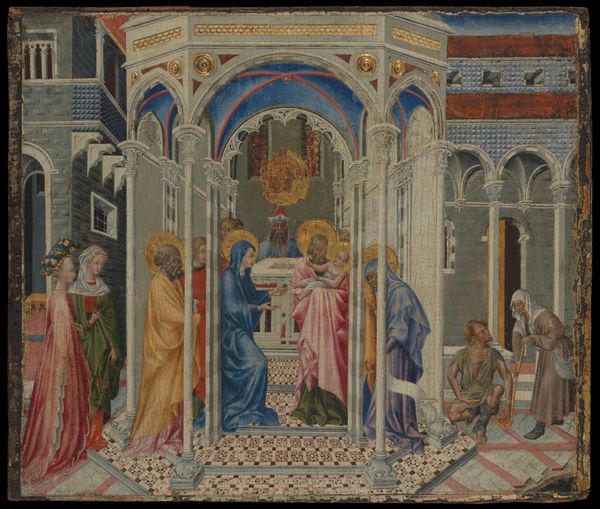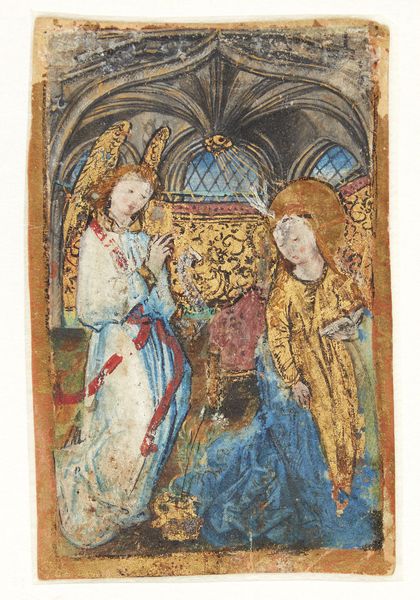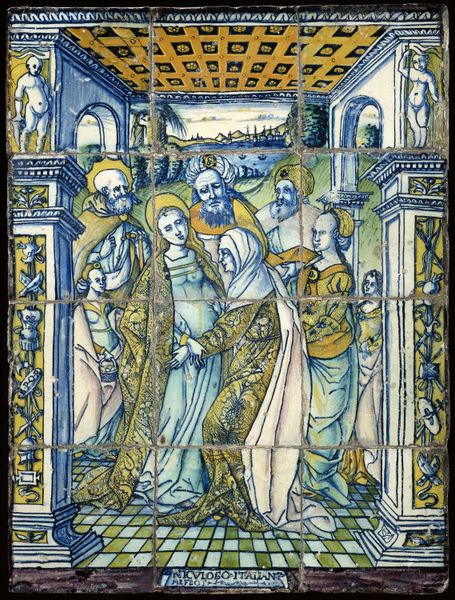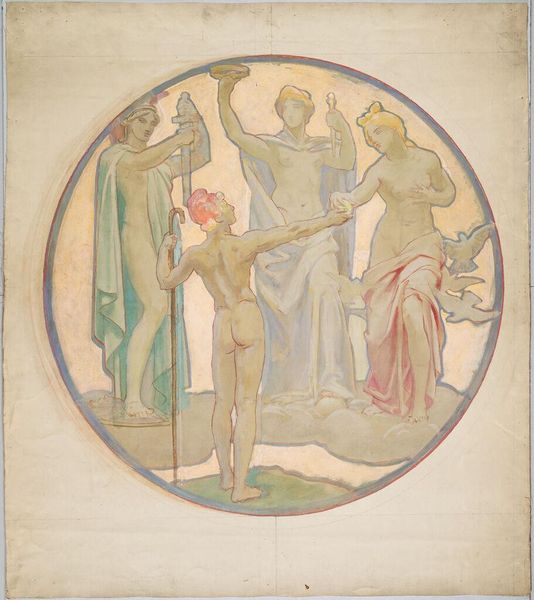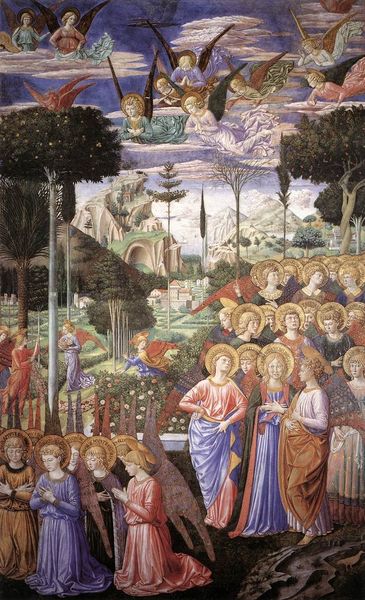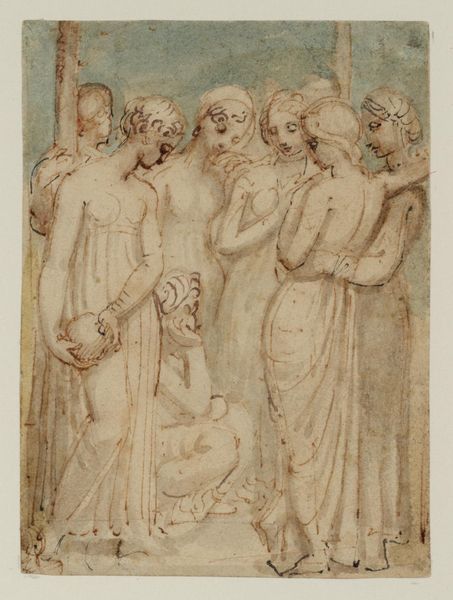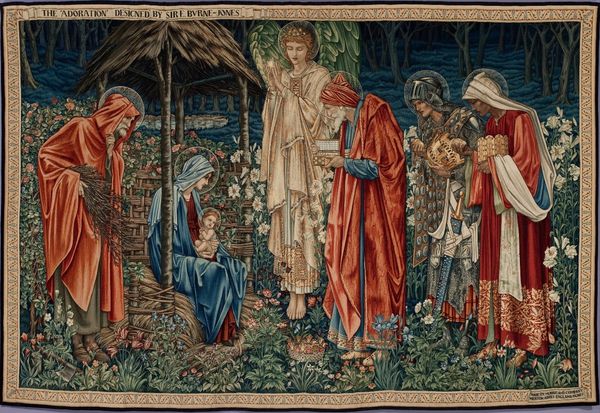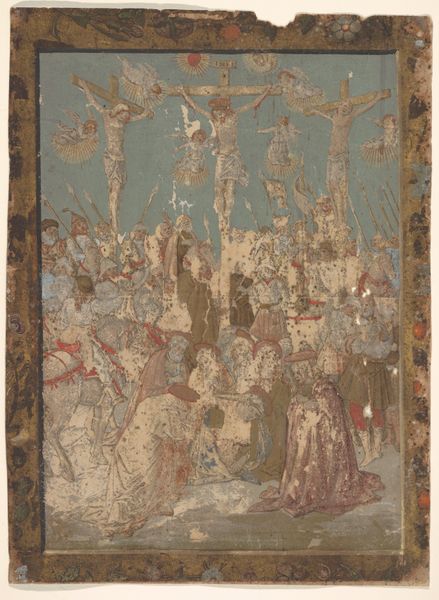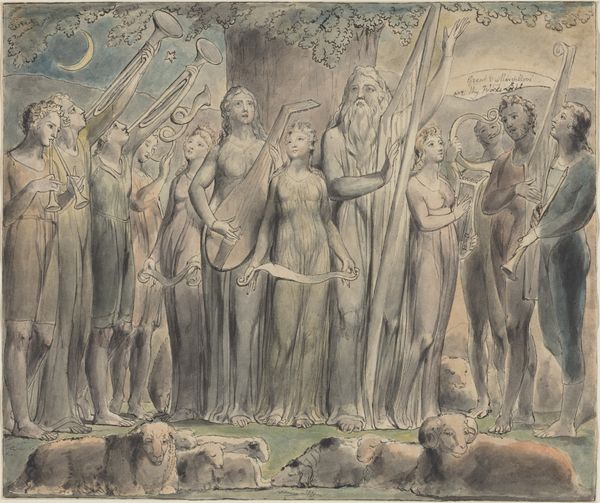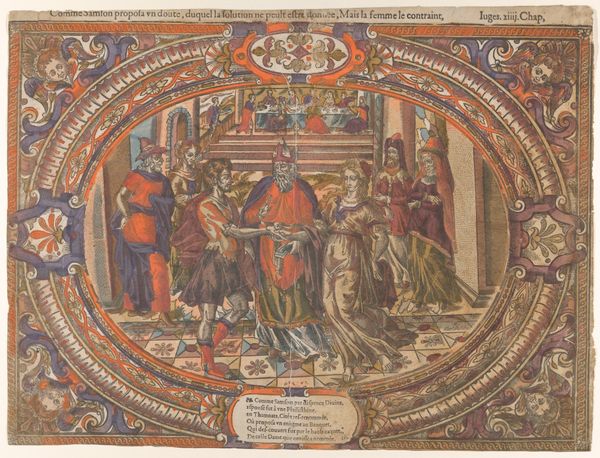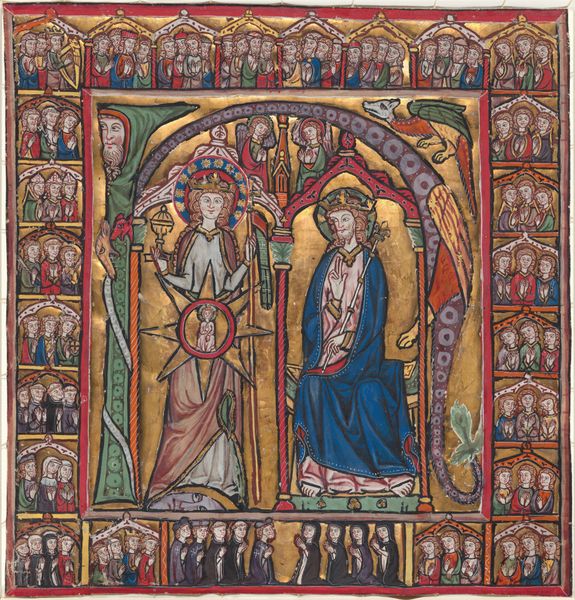
print, watercolor
#
narrative-art
# print
#
figuration
#
watercolor
#
romanticism
#
line
#
watercolour illustration
#
history-painting
#
watercolor
Dimensions: plate: 7.6 x 10.8 cm (3 x 4 1/4 in.) sheet: 32.1 x 24.1 cm (12 5/8 x 9 1/2 in.)
Copyright: National Gallery of Art: CC0 1.0
Curator: Standing before us is William Blake’s watercolor and print work, "Joseph of Arimathea Preaching to the Britons," created around 1794-1796. It depicts a scene rife with symbolism and Blake's characteristic vision. Editor: My initial reaction is to its arresting yet somewhat unsettling atmosphere. The figures are elongated, almost spectral, and the colour palette seems muted, dreamlike. The use of line, or the lack thereof in places, makes me think of unresolved tension. Curator: Blake was deeply interested in challenging established power structures, and it is understood that he drew heavily from historical, political and spiritual elements. This piece is indicative of his exploration of religious history through a distinctly counter-cultural lens. Joseph of Arimathea, an early follower of Christ, travels to Britain in some accounts, something Blake saw as part of a British spiritual heritage separate from Roman influence. Editor: I see the visual vocabulary here reinforces that. The almost frenetic energy, the swirling forms, it defies classical composition for something more…expressive. Look at how he uses colour, for example; that vibrant blue on one figure seems to act almost as a disruption amid the more subdued earth tones of other forms. It really draws the eye and seems almost out of step. Curator: Precisely. Blake was pushing against what he perceived as restrictive artistic conventions and social norms. His work sought to ignite the imagination, encourage a spiritual awakening rooted in individual expression, but also to tie these back to notions of Britain's unique destiny. This particular theme allowed him to blend nationalism with his own mythopoeic religious vision, criticizing orthodox forms of power. Editor: It's as though Blake is forging a new visual language that challenges viewers to actively participate in the interpretation. I also appreciate the texture he’s achieved—or seems to want to evoke—in the use of both printmaking and watercolors. This makes this print more complex than it might otherwise be. Curator: Considering how these themes have resonated across countercultural movements from Romanticism to today shows Blake's remarkable enduring presence and relevance. The tensions he embodied in this image—between nation, spirit, and art—speak profoundly. Editor: I agree completely, especially that what remains, visually and structurally, transcends the social conditions or time to which the piece specifically belongs. Thank you for shedding some light on this captivating, and yes, unsettling print.
Comments
No comments
Be the first to comment and join the conversation on the ultimate creative platform.

